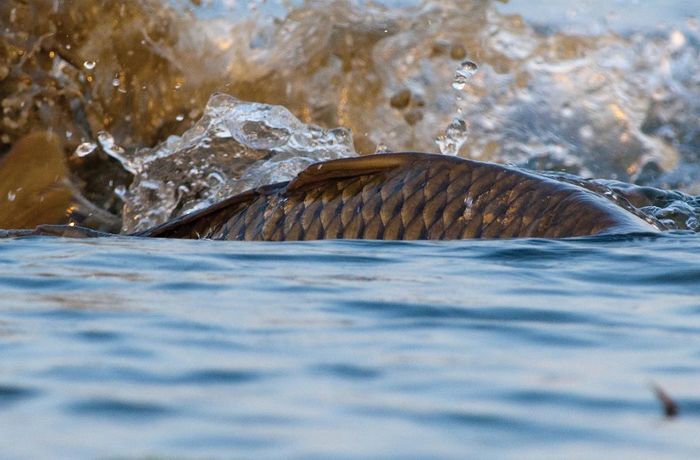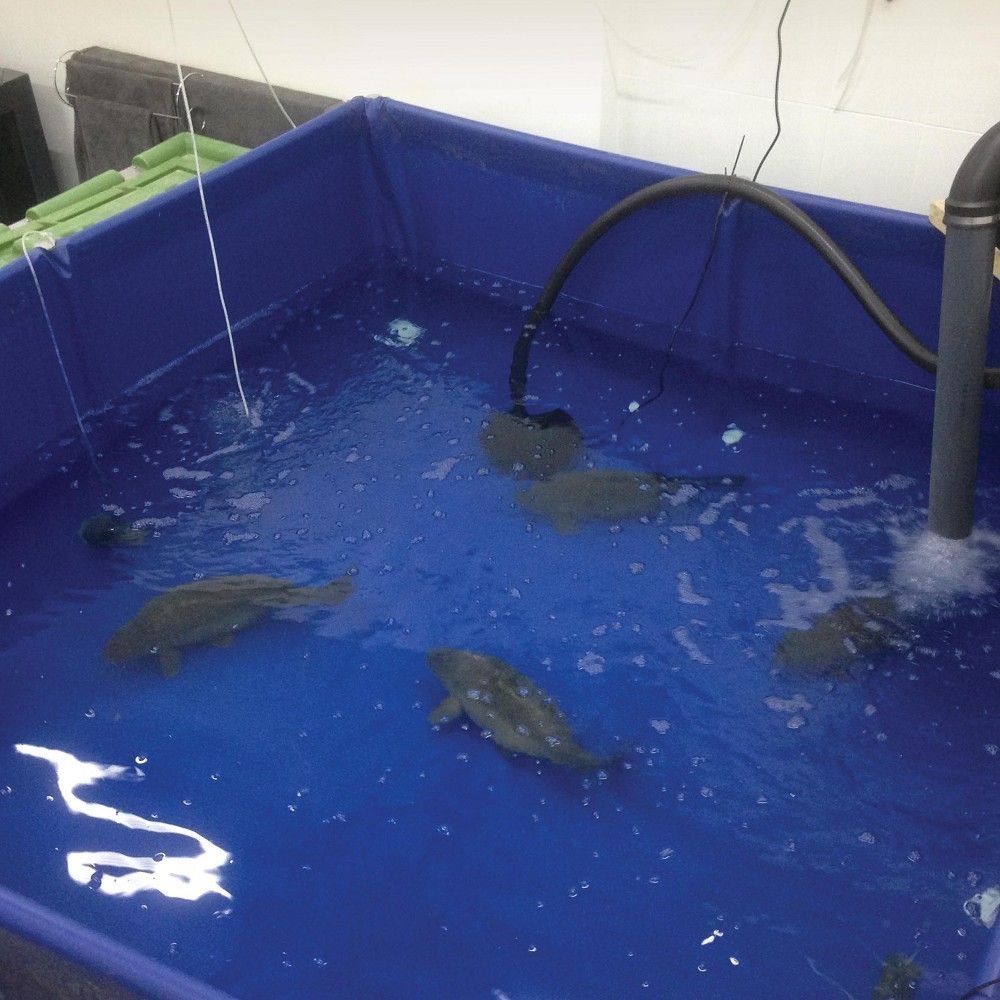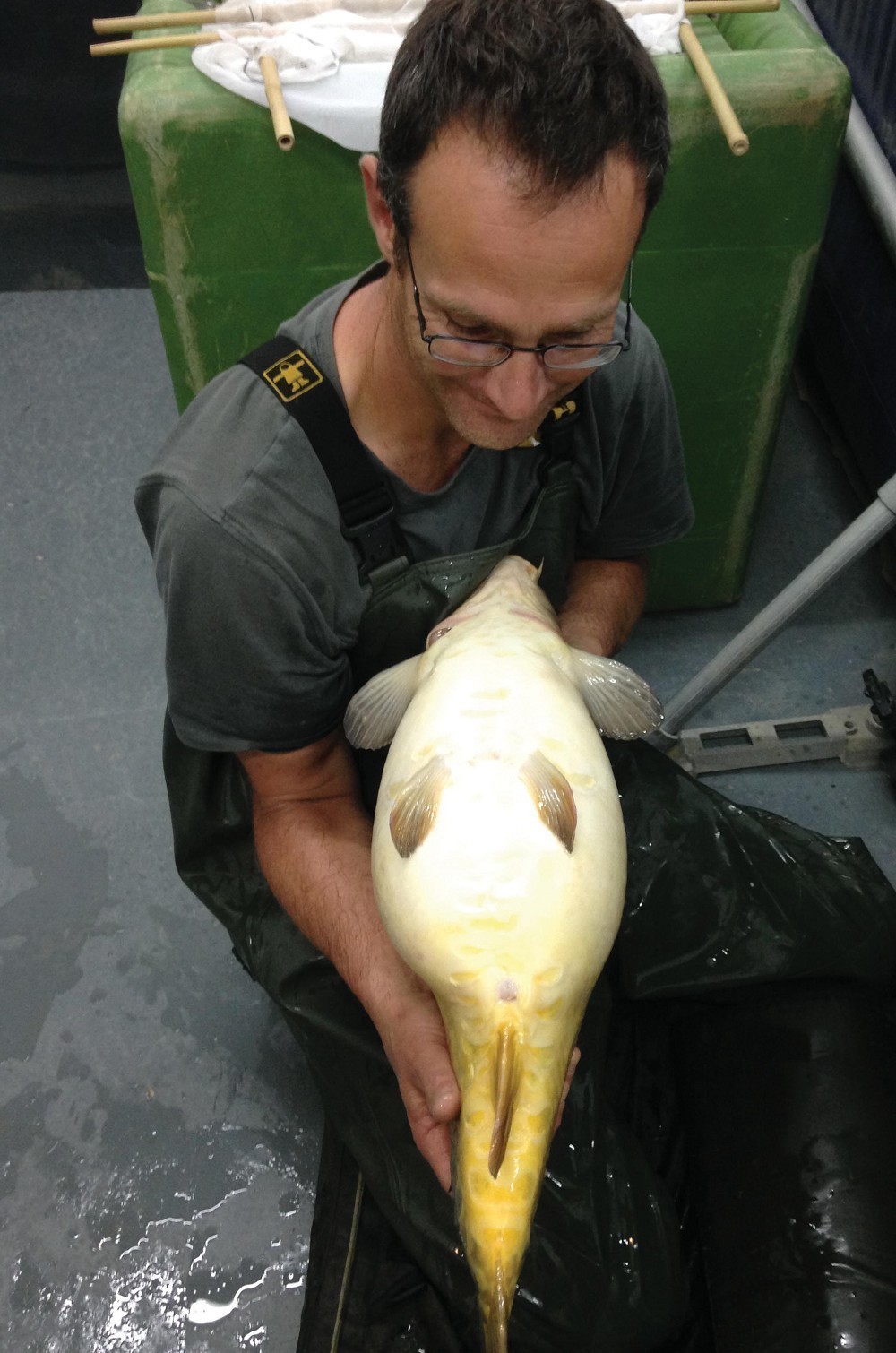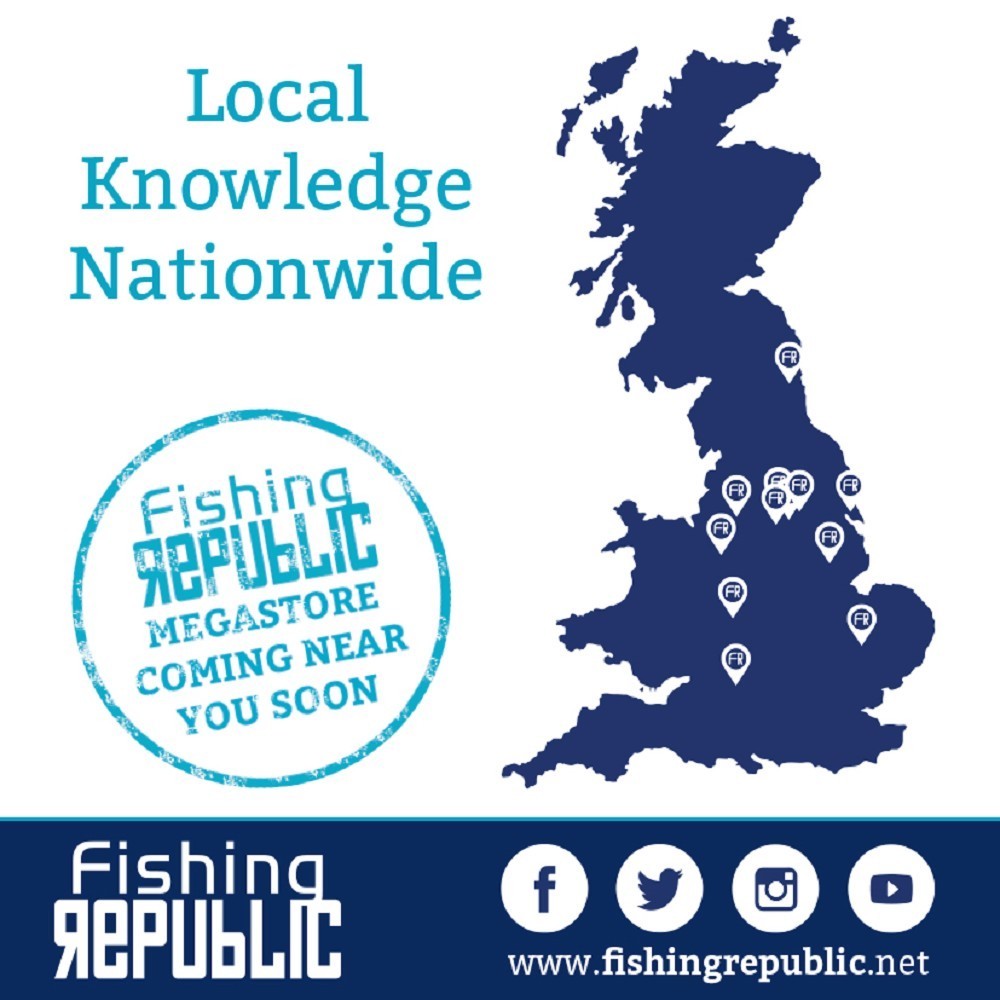The diary of a carp farmer
Simon Scott on how he spawns the next generation of dreams...

Having returned from France and caught up on my sleep for a couple of days, it was time to refocus my attention. I needed to blank out fishing for carp the size of dolphins and turn my attentions to the other end of the size spectrum; to carp the size of eyelashes!
Being early May I needed to head to the fish farm and start organising things for a vital process in the carp farming calendar: spawning time! May is a fabulous time of the year at the fish farm. Along the margins of many of the ponds, tall drifts of yellow iris flowers are held aloft amongst fresh dark green foliage and hawthorn trees are covered like snow with sweet smelling white blossom. The water in the growing ponds around the farm is warming up and the fish are all feeding hard.
Every year I witness carp spawning naturally in many of the growing ponds around the fish farm site. A frantic thunderous thrashing amongst margin plants as the dawn chorus greets the new day; there is no other noise around a pond or lake quite like it. Hugely rotund females rapidly panting amid plant stems and fresh weed growth, while desperate male fish jostle for pole position, doing their best to ensure their genetic material is passed to the next generation.
Carp commonly reach sexual maturity in either their third or fourth summer, depending upon their size, food availability and whether they are male or female. Males commonly maturing the summer before the females. Because of this many of the larger fish on the farm have become sexually mature and if the environmental conditions are correct they should spawn. This is a natural process and it is healthy for the stock to spawn out well each year if they can.
A large female fish can produce a colossal number of eggs on her own, so when a pond which contains several hundred double-figure carp all spawning simultaneously, there will be many millions of eggs produced in a morning or two! It is reproduction on a mind-blowing scale and in theory one natural spawning in a pond at the farm could easily produce enough tiny fish to stock every carp farm fry pond in the whole UK! However, Mother Nature has taken steps to ensure that despite the almost biblical scale of egg production we are not inundated with plagues of carp from these wild spawning events.
Carp eggs are small, produced in vast numbers and highly nutritious. A natural spawning therefore produces a highly calorific tasty short-lived feast, which is not to be missed. This is the aquatic worlds equivalent of Tesco having a “take as much as you like – free food day” and just about everything that swims about either in or on the water will gorge on carp eggs when given the opportunity. Every rudd, roach, bream, tench, eel, duck, swan, coot, newt and water insect will cash in and make the most of the feast. Surprisingly, in a rather macabre twist on parenting, this list also includes the adult carp themselves, which will feverishly consume carpets of eggs without giving their offspring a moment’s thought!
If any eggs do manage to survive long enough to hatch, the tiny eyelash sized fry are still incredibly vulnerable to predation. Additionally, due to their size and delicacy they are also sitting targets for any parasites which may be present in on-growing ponds. Parasites like argulus are common on large carp and cause little problem to them but for tiny carp of only a centimetre or two it is a whole different story.
Lastly, a newly hatched carp fry only has a minuscule mouth and is therefore incredibly limited in what food items it can eat. If the correct sized zooplankton is not present at exactly the right time they simply starve to death. So for the many millions of eggs that may be deposited along the margins during a natural spawning in May or June the chances of any fry surviving through their first summer of life within the pond are many, many thousands to one against! In most carp fisheries the sad truth is that not one single baby carp ever manages to make it through the first year of life.
Because of our annual management of the rearing ponds including processes like liming, which reduces the number of predators and improves the productivity of the aquatic environment; any naturally spawned fry that do manage to hatch in the rearing ponds may stand a slightly better chance of making it than those in a fishing lake. In fact, most years at harvest time we do come across lovely fry when we drain down and harvest the production ponds. Some ponds may contain several thousand fry while others might only contain a handful of tough little characters that have survived despite the odds.
If they are particularly handsome or unusual looking fry, or if they are of a really good size, we may well keep some of these hardcore survivors to on-grow to become production fish on the farm. However, we would never want to rely upon natural spawned survivors as a way to stock all of our production ponds; Mother Nature is far too unpredictable. Because of this, every year we carry out an artificially-induced spawning within the safe and controlled environment of the hatchery at the VS Fisheries site.
PREPPING THE PONDS
Undertaking this process means we are able to enormously improve survival rates by excluding predators, select exactly which parent fish we want to breed from therefore producing a wide variety of carp and lastly time the production of fry with great accuracy.
For an artificially-induced spawning to be successful and to yield large healthy one summer carp at the end of the autumn, two processes must be undertaken in parallel. The first of these is the creation of the perfect pond environment for the fry that we are going to produce to be stocked into. The second process is the selection and preparation of the brood fish we are going to breed from to ensure that they are ready to release high quality eggs and sperm exactly when we want them.
The process of creating the perfect pond environment for the fry to be stocked into once they leave the hatchery starts very early in the year. As soon as the previous year’s stock has been harvested and all the water has been drained away the ponds are allowed to dry for several weeks. This ensures any unwanted predators like newts, dragon-fly larvae and great diving beetle larva, which would consume large numbers of young carp, will not be able to take up residence in the pond.
By early April the bed of the fry ponds should have taken on the appearance of a dry riverbed in the desert. The once soft surface of the mud should have become a fragmented mosaic of dry silt with deep cracks running randomly back and forth across its surface. The cracks are beneficial, allowing oxygen to reach deep into the silt crust which enables beneficial bacteria to aid the release of nutrients previously lost in the mud. The fry ponds are then carefully dusted with hydrated lime which further ensures unwanted fry-eating predators are destroyed and the pH value of the silt is raised which in turn creates a more productive aquatic environment.
In mid-April the standpipes are then repositioned in the ponds and the process of filling the fry ponds is started using water straight from the spring above our fry unit. Being spring water it is free from any disease pathogens and parasites and is also of excellent quality. It usually takes us about two weeks to completely fill the shallow fry ponds with this beautiful clear water.
Once full, the ponds are then fertilised using a small amount of cattle manure, which is added to the water and then mixed around in the pond. This acts like an arable farmer fertilising his fields and adds important nutrients to the clear water in the fry ponds. This increase in nutrient levels acts as plant fertilizer and enables the single celled algae, that are present and at the base of the food chain, to reproduce rapidly in an environment which is hopefully near perfect for them. The water then gradually changes from glassy clarity to murky green-brown over a few days, the colour being caused by the many millions of algal cells now present.
Once the ponds have turned to a lovely green-brown colour they will be rich in food for a range of organisms in the pond referred to as zooplankton. Zooplankton, which are the next step up the food chain, are tiny animals that drift in the water and some of these highly nutritious animals are perfectly suited as food for young carp. In order to ensure we have the best possible zooplankton available for the fry, I add some daphnia (water flea) to the ponds at this point. Daphnia are slow swimming zooplankton which make an easy-to-catch, highly nutritious meal for a hungry young carp. Having introduced a small bucketful of this beneficial zooplankton to the pond their numbers escalate exponentially in the algae rich water. Hopefully within two weeks the ponds will be brimming with this fabulous food and the pond will at this stage be ready for the fry to be introduced.
THE RIGHT SELECTION
With preparation of the fry ponds ongoing, the first job to do upon my return from France was to select and move the brood fish that I wanted to breed from. Sue, Martyn and I spent an afternoon sorting these and finally after a great deal of debate and chin scratching, moved the adult fish which we are planning to breed into the hatchery. At VS Fisheries we have a number of relatively small brood-fish ponds scattered around the farm. These are kept lightly stocked and contain carp from a variety of all the bloodlines that we have at the fish farm. This ensures that should we have a disaster that we haven’t lost all of our stock from one of our bloodlines.
Once the brood-fish had been selected, they were separated so that the males all went into a large two-metre by two-metre tank in one part of the hatchery and the females all went into another similar tank within the inner hatchery building. This year I selected four female fish to bring in for breeding. These lucky ladies were all really plump and looked like they were carrying a great deal of spawn in their ovaries.
 Over the course of the following week, the fish were kept in the quiet surroundings of the insulated hatchery building
Over the course of the following week, the fish were kept in the quiet surroundings of the insulated hatchery buildingFollowing the success of last year’s fry, I selected three Harrow bloodline females and one Sutton female to breed from.
With the male fish I gave myself a far wider range of bloodlines and scale patterns. Amongst the ten male fish we brought into the hatchery were three stunning heavily-plated Sutton bloodline fish. There were also three amazing looking Leney’s, two of which were proper fully scaled corkers. There were also a couple of our Harrow bloodline and lastly I brought in our largest male brood-fish on the whole farm; a huge testosterone fuelled monster of a “Dink” that had shoulders like a weightlifter and pectoral fins the size of table tennis bats! I had very high hopes for any fry this brute might father; surely they would be future heavyweights.
With the brood fish now safely in the hatchery and with the males and females separated it was time to gradually warm them up a bit. Over the course of the following week the fish were kept in the quiet surroundings of the insulated hatchery building and slowly warmed up to 23-degrees centigrade in preparation for the breeding process.




